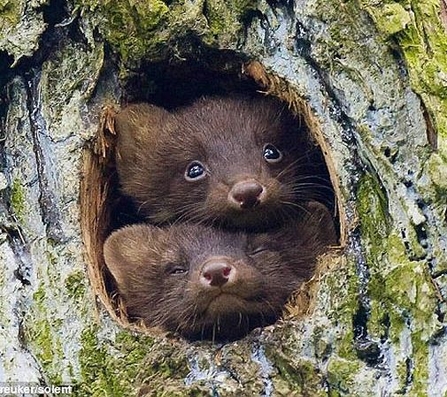Before we get on to cute young martens though, let’s first rewind back to last summer. Usually solitary animals, pine martens make an exception when duty calls and they pair up for breeding. These pairings are brief, with both males and females mating with several individuals through July and August.
With a gestation period of around 30 days, giving birth in autumn wouldn’t be wise with temperatures and prey availability dropping through the winter months. Instead, females employ a clever biological trick, delaying her pregnancy til sometime between January and March. This means the kits’ first few months will coincide with the warmer weather and plentiful prey that spring brings.


